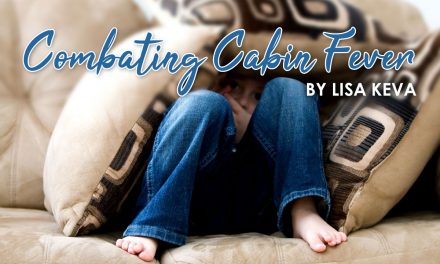Reading aloud equips your children with a personal toolbox they’ll use throughout their lives as readers, learners and communicators. In our busy and demanding home school lives, though, making time for this activity can be a challenge. In Part 1, we discussed the Why of reading aloud to all ages. If you desire to take the plunge or enhance your current read aloud time, consider some of these tips to using the 5 W’s.
Who should do the reading? Vary who reads. Mom or dad can read. Audio books provide a different voice, but don’t let audio books be your only source. Children need to see you and each other read. Have older children or independent readers take turns. Be patient with new readers and give them opportunities to practice reading aloud in an encouraging environment. Be present while others read and model good listening skills.
What should I read? Lists of well-loved, tried-and-true read-alouds may help. Such resources as Silly Books to Read Aloud and Read Aloud Handbook are specifically aimed at detailing read-aloud options. Broader-scope, annotated book lists such as Books Children Love or Honey for a Child’s Heart can also help determine appropriate themes and reading level, etc. However, don’t assume a book’s a good read aloud just because it’s on a “good book list.” Don’t limit yourself to others’ choices. Your unique family, education goals and interests will help determine what works best. Use the following ideas to select your own good read-alouds.
- A read-aloud serves specific purposes. For example, does it meet a family goal? Are you choosing from a what’s-best list? Or will this be just-for-fun? Give yourself permission to read for enjoyment! If you’re feeling stressed about “all that needs to be done,” choose read-alouds that connect to and reinforce your homeschool subjects.
- Look at how the subject matter is conveyed: the “nuts and bolts.” For example, books with lots of side notes and explanations may not work well for delivering aloud. Are there lots of foreign words or concepts your children aren’t prepared for? Conversely, does it contain conversation sparkers? Is the story told in first person (particularly good for young independent readers)?Look at the way the subject matter is presented. Is it an out-loud book? Sometimes you can get a sense of this from even the first line. There’s a hook, an appeal; there’s a “drawing you in.” For example, the Girl in a Cage begins, “Dear Lord, if it is not too much to ask, could you please send less wind and fewer turnips? The wind rattles the iron bars of my cage making me shake like an old man at his prayers.” Those first few lines intrigue, giving a quick picture of what’s to come. Good read-alouds use appealing language; the writing flows. Well-written books vary the phrasing, vocabulary and sentence lengths, etc. There will be a pleasant balance of details and action. Read the first few paragraphs; read some from the middle. See how you and your potential listeners might respond.
- Vary the reading level. Up through at least the mid-teen years, most people can effectively listen at least 2 grades above their reading level (i.e., a 4th grade reader for a 2nd grade listener). There is also benefit from varying reading levels. With younger children, start with picture books and move up, building to chapter length books. As you gradually lengthen the books, gradually lengthen the time. For long books or higher reading level books, a good rule of thumb is to read a chapter or get to a good stopping place in 20 minutes or so.
- Vary the genre. Read poetry! Poetry stretches our vocabulary and introduces different language patterns with twists from the norm–and it’s just fun. Read nonfiction! You’re still reading for facts and learning, but well-written nonfiction that is oral friendly does exist. For example, choose historical fiction, science nonfiction, a biography of a famous inventor or history-maker.
- Take turns choosing books (even if from a list). Remember, reading aloud is an opportunity to get acquainted with books that listeners wouldn’t naturally choose for themselves.
- Read the story as written but aim for making the book come alive.
- Resist the temptation to reinterpret or “translate” the writing. Doing so is a disservice. Help your listeners learn how to handle new words or difficult phrasings for themselves and do not do it for them.
- Use vocal and facial expressions and hand gestures. It’s nice to use different voices, but that’s not a necessity as long as they are distinguishable.
- Chat about the book at appropriate places. Ask concrete questions about the storyline and the characters, but also question beyond the plot. Books are more than just plot and facts; they are vehicles to explore significant ideas and their application to our lives.
- Reinforce the read aloud. Some experts suggest adding a three dimensional element while reading: eat bread and jam while listening to Bread and Jam for Frances; color a prairie animal page while listening to Little House on the Prairie. The ideas are endless.
When and Where should I read? Having a traditional time for reading aloud is valuable: thus, the proverbial bedtime story. As homeschoolers, we have a distinct advantage of reading at different times and at different locations. Finding alternate times to read aloud will enhance benefits. Our family would sometimes read during meal times. Some families take reading breaks during a long school day. Read outside at a picnic table; read before physical activity. Read aloud to start your day with Bible or character stories, giving family members time to get those brain cells firing.
How should I read? You may have heard someone say this, “I would read aloud, but I don’t have a good reading voice.” It’s true; Audible won’t be hiring any of us any time soon. But what does that attitude tell our children? Do we want them to stop doing something because they’re not instantly good at it? Reading aloud takes practice; let your children see that.
So, what are you doing here? Go grab a great book and read!





